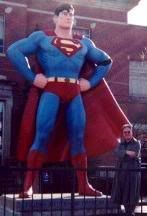| Pop Culture Gadabout | ||
|
Monday, January 17, 2011 ( 1/17/2011 12:42:00 PM ) Bill S.  “AS QUICKLY AS THESE MOMENTS OF CLARITY COME . . .THEY CAN GO.” A collection of three intertwining graphic novels set in a rural Canadian county, Jeff Lemire’s The Complete Essex County (Top Shelf) is a meaty 512-page slab of graphic novel lit that can stand along such models of written story prose as Sherwood Anderson’s Winesburg Ohio. Elegantly moody and distinctly honed in its characterization, the black-and-white GN examines three members of an isolated community at various stages in life with an empathy and clear-sightedness that’s rare enough in prose fiction, let alone graphic novels. Originally released in 2009, the work is being reissued by its publisher in a new printing that deserves to be discovered by those who missed it the first time. “AS QUICKLY AS THESE MOMENTS OF CLARITY COME . . .THEY CAN GO.” A collection of three intertwining graphic novels set in a rural Canadian county, Jeff Lemire’s The Complete Essex County (Top Shelf) is a meaty 512-page slab of graphic novel lit that can stand along such models of written story prose as Sherwood Anderson’s Winesburg Ohio. Elegantly moody and distinctly honed in its characterization, the black-and-white GN examines three members of an isolated community at various stages in life with an empathy and clear-sightedness that’s rare enough in prose fiction, let alone graphic novels. Originally released in 2009, the work is being reissued by its publisher in a new printing that deserves to be discovered by those who missed it the first time.First book in the collection, “Tales from the Farm,” centers on a jug-eared farm boy named Lester who is living with his Uncle Ken Papineau after his mother’s death from cancer. Lester’s relationship with his uncle is prickly and fraught with misunderstandings. The boy spends much of his time fantasizing about super-hero comics -- to the point of wearing a superhero cape to school -- which naturally doesn’t sit well with his practical-minded uncle. The only area where the two share some commonality is in their love of hockey, and even then we see Lester rebuff his uncle’s offer to watch the game with him in favor of retreating into his bedroom and solitarily watching it there. Lester strikes up a friendship with Jimmy LeBeuf, a cashier at the local Esso station who has a brief run as a professional hockey player until he got “hit real bad” at a game. Jimmy is “kind of slow now,” a big kid who keys into Lester’s comic book fantasies. The two share a secret friendship -- Lester showing off his hand-drawn superhero comic to Jimmy – which inevitably gets discovered by Uncle Ken. In the end, our hero comes to grips with imagination’s limitations when it comes to coping with real-life tragedy. Though the first tale concludes with a superhero fantasy sequence, it remains a fairly straightforward piece of storytelling. The second book, “Ghost Stories,” proves a more elaborate sleight-of-hand: the story of an aging former hockey player, Lou LeBeuf, spending out his last days in a nursing home as he drifts in and out of the major moments in his life (his short stint as a pro hockey player, his even shorter involvement in a romantic triangle with his brother, his years alone in the city). In addition to his addled memory, Lou has lost his hearing. “Another way to be alone in the world,” he notes, and the story compellingly evokes the ways that aging can diminish a person’s dignity. A beautiful piece of graphic storytelling. The third book, “The Country Nurse,” looks at Annie Guenneville, the nurse who had taken care of Lester’s mother in her final days as well as Lou LeBeuf. Her tale serves to connect all the characters we’ve seen (there’s even a family tree included to make things clearer) and provide an even stronger historical context for the Essex County setting, flashing back to a significant moment in 1917 involving Annie’s grandmother. The collection concludes with two shorter side stories, “The Essex County Boxing Club” and “The Sad and Lonely Life of Eddie Elephant-Ears,” which add to the volume’s overall theme of regret, loss and the memories of things lost. (In title hero Eddie’s case, his tragedy lies in the fact that an accident keeps him from remembering his past.) Still, the meat of the book is its three fuller stories, which together provide a memorable look at life in one lonely Canadian community. Lemire’s art, both detailed and loose, captures his melancholy world wonderfully. His use of solid blacks is particularly visually striking and suits a story where death is always flying overhead. There are moments in this volume where his characters silently stand in the midst of their stark landscape, considering both their past and present, that’ll stick with you long after you’ve closed this emotionally rich graphic novel. (First published on Blogcritics.) Labels: modern comics # | |
|
|

